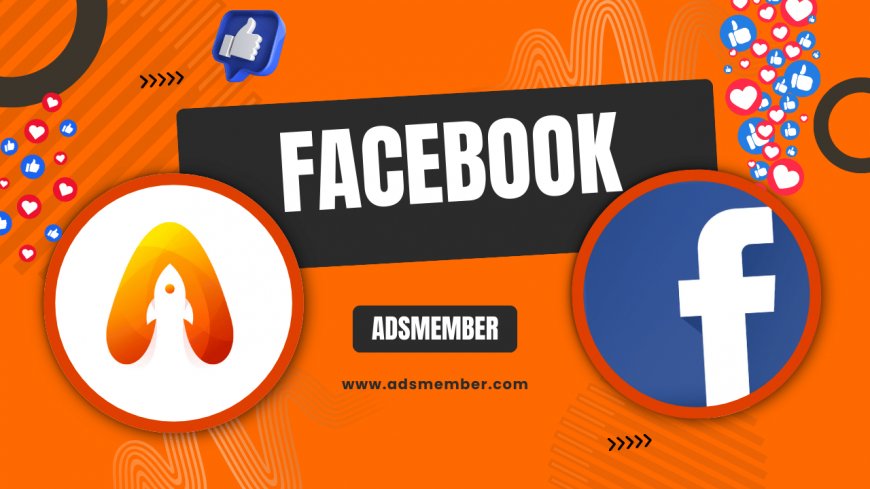How to Add an Admin to Your Facebook Page Easily
Learn how to add an admin to your Facebook Page with this easy guide. Follow step-by-step instructions, understand roles, and manage permissions effectively.

Managing a Facebook Page can feel like juggling a dozen tasks, especially if you’re doing it solo. Honestly, I’ve been there, and the moment I figured out how to add an admin to my page, it was a game-changer. Adding an admin not only lightens your workload but also ensures your page stays active and engaging. Whether you’re running a business, community, or personal brand, this guide will walk you through the process of adding an admin to your Facebook Page with clear, actionable steps. Let’s dive in and make your page management a breeze!
Why Add an Admin to Your Facebook Page?
Adding an admin to your Facebook Page isn’t just about sharing the load—it’s about strategic growth. Admins can post content, respond to messages, and even run ads, freeing you to focus on bigger goals. In my opinion, having a trusted admin is essential for consistency, especially if your page serves a large audience. According to Meta’s own data, Pages with active management see 40% more engagement (source: Facebook Business News). So, why go it alone?
Benefits of Multiple Admins
Multiple admins bring diverse perspectives to your content strategy. They can handle time-sensitive tasks like customer queries or live events. I’ve noticed that pages I manage with a team often perform better because we brainstorm ideas in real-time. Plus, if one admin is unavailable, others can step in, ensuring no downtime.
Understanding Facebook Page Roles Before Adding an Admin
Before you add an admin to your Facebook Page, it’s crucial to understand the different roles available. Facebook offers six roles—Admin, Editor, Moderator, Advertiser, Analyst, and Jobs Manager—each with specific permissions. As the page owner, you’re automatically the primary admin, but assigning the right role to a new team member prevents accidental overreach. Let’s break this down.
Admin vs. Other Roles: Key Differences
An Admin has full control over the page, including managing settings, roles, and content. Editors can create posts and manage content but can’t change settings. Moderators handle community interactions, while Advertisers focus on ads. Analysts only access insights, and Jobs Managers handle job postings. In my experience, starting someone as an Editor is safer until trust is built.
Step-by-Step Guide to Add an Admin to Your Facebook Page
Ready to add an admin? The process is straightforward, but attention to detail is key. I’ve done this dozens of times for clients, and I’m sharing the exact steps to ensure you don’t miss a beat. Follow along, and you’ll have a new admin in minutes.
1. Access Your Facebook Page Settings
First, log into Facebook and navigate to your Page. Click on “Settings” in the left-hand menu (or “Manage Page” on mobile). This is your control center for all page configurations. Make sure you’re using a desktop for easier navigation—trust me, it’s less clunky.
2. Navigate to Page Roles
In the Settings menu, find “Page Roles” on the left sidebar. Click it to see a list of current team members and their roles. This section also shows pending invitations, which is handy for tracking.
3. Add a New Admin
Under “Assign a New Page Role,” type the name or email of the person you want to add. They must already have a Facebook account. Select “Admin” from the dropdown menu, then click “Add.” A notification will be sent to them to accept the role.
4. Confirm and Notify
Once they accept, their name will appear in the Page Roles list. I always send a quick message to confirm they’ve received the invite—sometimes notifications get buried in their inbox.
Tips for Managing Admins Effectively
Adding an admin to your Facebook Page is just the start. Managing them well ensures your page runs smoothly. Here are some unique insights I’ve picked up over the years that most guides overlook.
Set Clear Guidelines
Before granting access, outline what’s expected. Should they post daily? Respond to comments? I create a simple Google Doc with do’s and don’ts for every admin. This prevents miscommunication and keeps your brand voice consistent.
Regularly Review Roles
Check your Page Roles every few months. If someone’s inactive or no longer part of the team, revoke access immediately. I learned this the hard way after an ex-team member accidentally posted on a client’s page!
Encourage all admins to enable two-factor authentication (2FA) on their accounts. It adds an extra layer of security, protecting your page from unauthorized access. I’ve seen pages get hacked due to weak passwords—don’t let that be you. Head to your personal account settings, enable 2FA, and remind your team to do the same.
Bonus Tip: Use Two-Factor Authentication
Common Pitfalls to Avoid When Adding an Admin
Even with the best intentions, mistakes happen. I’ve seen clients struggle with admin management, so here’s my take on pitfalls to dodge when you add an admin to your Facebook Page.
Assigning Admin Role Too Quickly
Don’t rush to make someone a full admin. Start with a limited role like Editor or Moderator. Once they prove reliable, upgrade their access. This layered approach has saved me from potential disasters.
Ignoring Notification Delays
Sometimes, invite notifications don’t reach the recipient instantly. If they don’t accept within 24 hours, resend the invite or check with them directly. Patience pays off here.
FAQ: How Do I Add an Admin to My Facebook Page?
Go to your Page Settings, click “Page Roles,” and enter the person’s name or email under “Assign a New Page Role.” Choose “Admin” from the dropdown and click “Add.” They’ll receive a notification to accept the role.
FAQ: Can I Remove an Admin from My Facebook Page?
Yes, navigate to “Page Roles” in Settings, find their name, click “Edit,” and select “Remove.” Confirm the action, and their access will be revoked instantly. Always double-check before removing.
FAQ: What’s the Difference Between Admin and Editor Roles?
An Admin has full control over the page, including managing roles and settings. An Editor can create content and manage posts but can’t alter page settings or roles. Choose wisely!
FAQ: Can Someone Be an Admin Without a Facebook Account?
No, they must have a personal Facebook account to be assigned any role. If they don’t have one, they’ll need to create an account first before you can add them.
FAQ: How Many Admins Can a Facebook Page Have?
There’s no strict limit to the number of admins, but Meta recommends keeping it small for security. I suggest no more than 3–5 admins to avoid confusion and maintain control.
Adding an admin to your Facebook Page can transform how you manage your online presence. It’s a simple process, but as I’ve shared, it’s all about strategy and caution. From understanding roles to setting guidelines, these steps ensure your page thrives with a trusted team. If you’re looking for more social media management tips, check out our Facebook Guides. Got questions or a unique case? Drop a comment—I’m all ears!
What's Your Reaction?
 Like
0
Like
0
 Dislike
0
Dislike
0
 Love
0
Love
0
 Funny
0
Funny
0
 Angry
0
Angry
0
 Sad
0
Sad
0
 Wow
0
Wow
0



















































